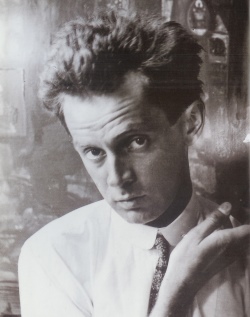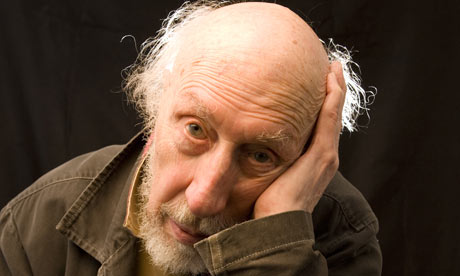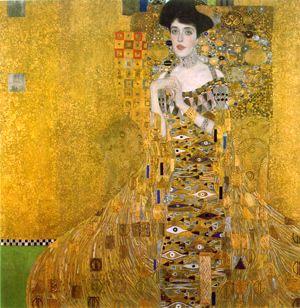
Sunday, 9 November 2014
Richard Hamilton
Hamilton was a member of the Independent group, formed in the 1950s by a group of artists and writers at the Institute of Contemporary Arts, whose symposiums contributed to the development of Pop Art in Britain. He was one of the prime practitioners of the critic Lawrence Alloway's theory of a 'fine/pop art continuum'. Hamilton interpreted this as meaning that 'all art is equal - there was no hierarchy of value


Thursday, 6 November 2014
Man Ray
Emmanuel Radnitzky otherwise
known as Man Ray was born August 27, 1890 in Philadelphia was an American modernist artist known for his amazing Painting, photography, Assemblage, Collage and
film pieces. Man Ray's father worked in a garment factory and ran a small tailoring
business out of the family home, the household environment left its mark imbedded
in Man Ray showing a clear theme of tailoring throughout his work as it
includes sewing machines, pins, threads and needles etc. He was a significant
contributor to the Dada and Surrealist
movements, although his ties to each were informal. He created major works in an
array of Medias but considered himself a “painter above all”. He was best known
for his photography, and he was a famously known to be a fashion and portrait photographer. Man Ray is also recognized for his work with photograms, which he renamed as "rayographs" to show the personal link between him and his work.
Thursday, 30 October 2014
Zentangles
Zentangles are miniature pieces of unplanned, abstract, black and white art created through a very specific Method from an ensemble of simple, structured patterns
The process of creating a Zentangle is a form of “artistic meditation” as one becomes completely engrossed in making each pattern, deliberately focusing on “one stroke at a time”. The creativity options and pattern combinations are boundless.
The process of creating a Zentangle is a form of “artistic meditation” as one becomes completely engrossed in making each pattern, deliberately focusing on “one stroke at a time”. The creativity options and pattern combinations are boundless.
Leonardo Da Vinci
Leonardo da Vinci (1452–1519) is one of the most intriguing personalities in the history of Western art. Trained in Florence as a painter and sculptor in the workshop of Andrea del Verrocchio (1435–1488), Leonardo is also celebrated for his scientific contributions. Leonardo's curiosity and insatiable hunger for knowledge never left him. He was constantly observing, experimenting, and inventing, and drawing was, for him, a tool for recording his investigation of nature. Although completed works by Leonardo are few, he left a large body of drawings (almost 2,500) that record his ideas, most still gathered into notebooks. He was principally active in Florence (1472–ca. 1482, 1500–1508) and Milan (ca. 1482–99, 1508–13), but spent the last years of his life in Rome (1513–16) and France(1516/17–1519), where he died. His genius as an artist and inventor continues to inspire artists and scientists alike centuries after his death.
Friday, 24 October 2014
Egon Schiele
 Schiele's childhood was mostly spent being fascinated by trains, as he would spend many hours drawing them, to the point where his father felt obligated to destroy his sketchbooks. When he was 11 years old, Schiele moved to the nearby city of Krems (and later to attend secondary school. To those around him, Schiele was regarded as a weird child. Shy, quiet and reserved, he didn't do too well at school except in athletics and drawing, and was usually in classes made up of younger pupils.
Schiele's childhood was mostly spent being fascinated by trains, as he would spend many hours drawing them, to the point where his father felt obligated to destroy his sketchbooks. When he was 11 years old, Schiele moved to the nearby city of Krems (and later to attend secondary school. To those around him, Schiele was regarded as a weird child. Shy, quiet and reserved, he didn't do too well at school except in athletics and drawing, and was usually in classes made up of younger pupils. When Schiele was 15 years old, his father died from syphilis, and he became a ward of his maternal uncle, Leopold Czihaczec, he was also a railway official. Although he wanted Schiele to follow in his footsteps, and was distressed at his lack of interest in academia, he recognised Schiele's talent for drawing and reluctantly allowed him a tutor; the artist Ludwig Karl Strauch. In 1906 Schiele applied at the Kunstgewerbeschule School of Arts and Crafts in Vienna. Within his first year there, Schiele was sent, at the insistence of several faculty members. Vienna 1906. His main teacher at the academy was Christian Griepenkerl, a painter whose strict and ultra-conservative style annoyed Schiele and his fellow students so much that he left three years later.
Even thought his work basically copied their styles are noticeably visible in Schiele's first works, he soon evolved into his own distinctive style.
Schiele's earliest works between 1907 and 1909 contain strong similarities with Klimt's work, as well as influences from the Art Nouveau movement In 1910, Schiele began experimenting with nudes and within a year a definitive style featuring emaciated, sickly-coloured figures, often with strong sexual overtones. Schiele also began painting and drawing children.
Some view Schiele's work as being grotesque, pornographic, and disturbing, focusing on sex, death, and discovery. He focused on portraits of others as well as himself. In his later years, while he still worked often with nudes, they were done in a more realist and tasteful fashion. He also painted Van Gogh's sunflower tributes as well as landscapes and still lifes. Schiele's work grew more complex and intricate after his imprisonment in 1912 he dealt with themes such as death and rebirth (re-incarnation) although female nudes remained his main output. During the war Schiele's paintings became larger and more detailed, when he had the time to produce them. His military service however gave him limited time, and much of his output consisted of linear drawings of scenery and military officers due to his environment. Around this time Schiele also began experimenting with the theme of motherhood and family. His wife Edith was the model for the majority of his female figures, but during the war due to circumstance, many of his models were male. Since 1915, Schiele's female nudes had become fuller in figure, but many were deliberately illustrated with a lifeless doll-like appearance. Towards the end of his life, Schiele drew many natural and architectural subjects. His last few drawings consisted of female nudes, some in masturbatory poses.
Subscribe to:
Comments (Atom)









